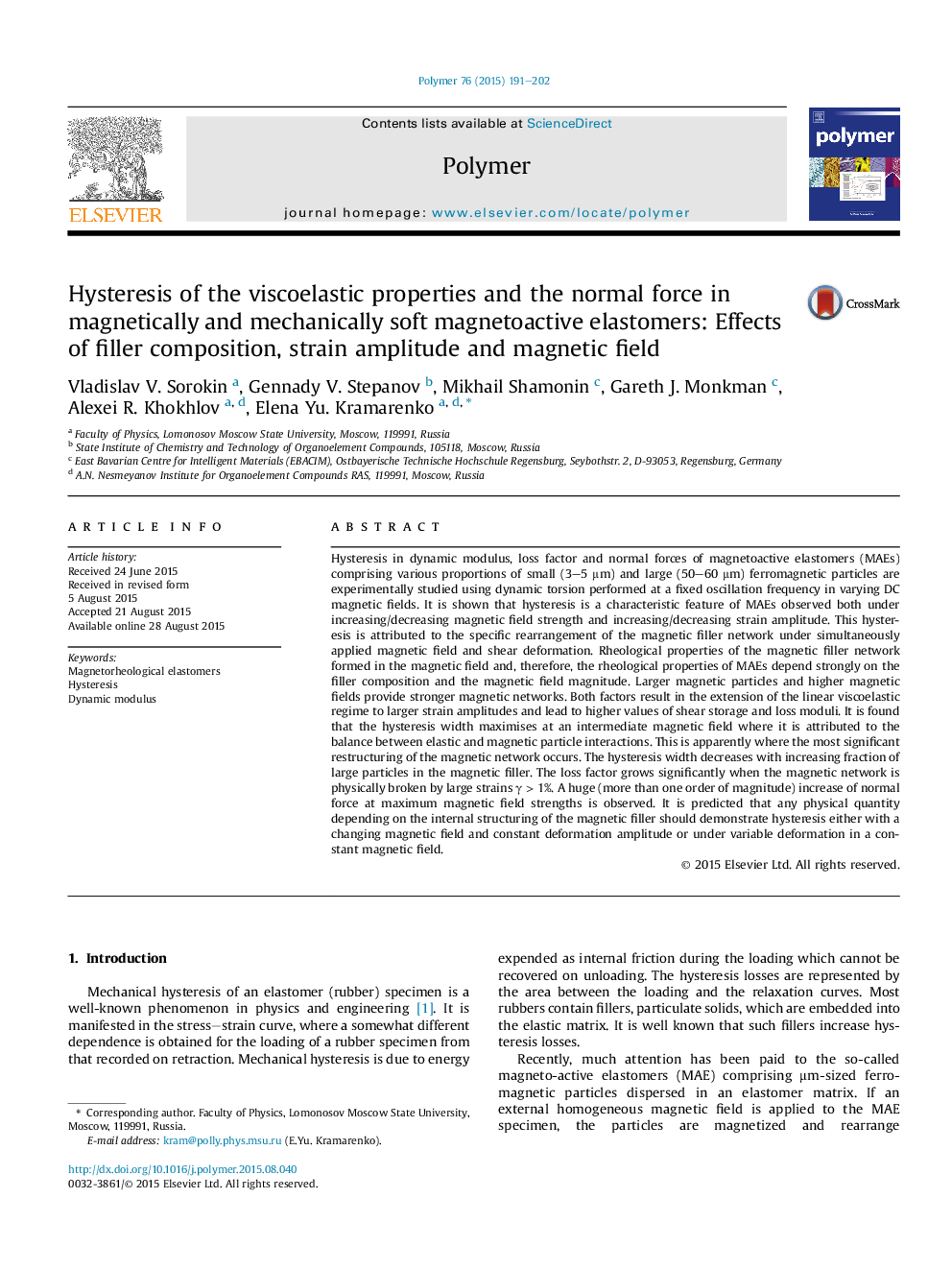| Article ID | Journal | Published Year | Pages | File Type |
|---|---|---|---|---|
| 5180050 | Polymer | 2015 | 12 Pages |
â¢Dynamic modulus and normal forces of magnetoactive elastomers are experimentally studied.â¢Hysteresis of dynamic modulus is observed under increasing/decreasing magnetic field.â¢Hysteresis of dynamic modulus is observed under increasing/decreasing strain amplitude.â¢The hysteresis width decreases with increasing fraction of large particles in the filler.â¢A huge increase of normal force at maximum magnetic field strengths is observed.
Hysteresis in dynamic modulus, loss factor and normal forces of magnetoactive elastomers (MAEs) comprising various proportions of small (3-5 μm) and large (50-60 μm) ferromagnetic particles are experimentally studied using dynamic torsion performed at a fixed oscillation frequency in varying DC magnetic fields. It is shown that hysteresis is a characteristic feature of MAEs observed both under increasing/decreasing magnetic field strength and increasing/decreasing strain amplitude. This hysteresis is attributed to the specific rearrangement of the magnetic filler network under simultaneously applied magnetic field and shear deformation. Rheological properties of the magnetic filler network formed in the magnetic field and, therefore, the rheological properties of MAEs depend strongly on the filler composition and the magnetic field magnitude. Larger magnetic particles and higher magnetic fields provide stronger magnetic networks. Both factors result in the extension of the linear viscoelastic regime to larger strain amplitudes and lead to higher values of shear storage and loss moduli. It is found that the hysteresis width maximises at an intermediate magnetic field where it is attributed to the balance between elastic and magnetic particle interactions. This is apparently where the most significant restructuring of the magnetic network occurs. The hysteresis width decreases with increasing fraction of large particles in the magnetic filler. The loss factor grows significantly when the magnetic network is physically broken by large strains γ > 1%. A huge (more than one order of magnitude) increase of normal force at maximum magnetic field strengths is observed. It is predicted that any physical quantity depending on the internal structuring of the magnetic filler should demonstrate hysteresis either with a changing magnetic field and constant deformation amplitude or under variable deformation in a constant magnetic field.
Graphical abstractDownload high-res image (269KB)Download full-size image
